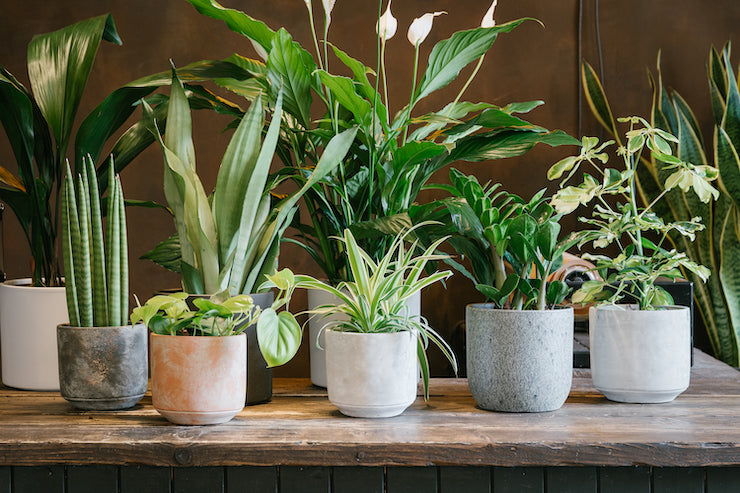
Care Guide: Calatheas
Calatheas are one of the most recognisable houseplants and can also be identified under the Geoppertia genus after they were reclassified. They are renowned for their colourful painterly patterns such as the ‘roseopicta’, ‘ornata’ and ‘White Fusion’ species. Endemic to the tropical rainforests of South America, these plants are part of the Marantaceae family and are closely related to Maranta, Ctenanthe and Stromanthe.
This fabulous genus grows on the forest floor where they are protected from any harsh sunlight and sheltered from high winds. Due to their often-shady habitats, these plants have cleverly adapted to move their leaves with the sun. This allows them to capture as much available light as possible to achieve optimum levels of photosynthesis. The folding of their leaves, referred to as nastic movement, has earned Calatheas the reputation of being a symbol of new beginnings or turning over a new leaf.
If you are on the hunt for a pet friendly indoor plant look no further than the Marantaceae family to protect your furry friends!
Caring for Calathea
In our homes Calathea thrive in bright, indirect light. They can tolerate slightly shadier spots however this will result in slower growth and will mean that the plant will require less frequent watering. They are renowned humidity lovers and should be misted frequently to keep their leaves looking lush. Calatheas require watering when the top 3cm to 4cm of compost has dried out completely. This is usually every 7 to 10 days in the spring and summer. In the colder months, this should be reduced to prevent over-watering and the potential of root rot. When watering, it is important to remove the plant from any decorative pots. Hold the Calathea in its nursery pot over the sink and pour water in until it begins to drain out of the base of the pot. Once the plant has fully drained, place it back in its usual spot. Watering plants in this way will ensure the compost is fully saturated without any excess water sitting in the base of decorative pots. Plants sitting in water for too long will result in root rot.
Apply a quality general houseplant feed every second watering during the growing season. Generally, Calatheas require repotting once a year in the spring or summer. However, always check to make sure there are roots growing through the drainage holes at the base of the nursery pot or, gently remove the plastic pot to check if the roots are spiralling densely. This is a sign the plant has used up all of its growing space!
Tips and Tricks for Calathea
Dry Leaves
Resolving dry leaves on Calathea is usually as simple as upping your humidity throughout the week by misting the plant every couple of days. Here in the UK, this genus does best in the brightest light possible, but be warned direct light will cause the leaves to scorch creating crisp brown patches, so avoid placing these plants in south facing window sills. Finally, make sure to position the plant away from any heat sources such as radiators and fireplaces to prevent their leaves from drying out.
Yellowing or Drooping Leaves
The most common cause of yellowing in houseplants is over watering. Although regular watering is important, never use a specific day once a week as an indicator to add water. Instead, use this as a guide to check the compost has sufficiently dried out by sticking your finger into the compost. Calatheas hate the cold and should be positioned away from any particularly draughty spots. If kept too cold the leaves will yellow and wilt.
Curling Leaves
Curling leaves can be a result of the plant being too cold or positioned in a draughty spot.
Check out our website or visit us in store to peruse our selection of Calatheas.



